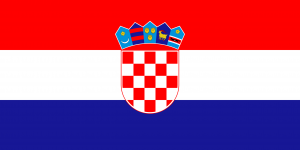Language/Croatian/Grammar/Adjectives:-Gender-and-Number
As a beginner in learning Croatian, you may already be familiar with adjectives, which are words used to describe, modify or give more information about a noun or pronoun. In this lesson, we will focus on the gender and number agreement of adjectives in Croatian, as well as how to recognize and form them correctly. This lesson will further enhance your knowledge of Croatian language and help you develop your speaking, reading, and writing skills.
Adjectives and Gender
In Croatian, just like in many other languages, adjectives must agree in gender with the noun they refer to. This means that if a noun is masculine, the adjective describing it must also be in the masculine form, and the same goes for feminine and neuter.
To form a Croatian adjective, we must first look at the noun it describes and determine its gender. Nouns in Croatian could be masculine, feminine, or neuter. We can recognize the gender of Croatian nouns by identifying their endings, but as a beginner, it's important to simply memorize the gender of each noun until you become more familiar with the patterns.
Here is an example of how an adjective agrees with a noun in Croatian:
| Croatian | Pronunciation | English |
|---|---|---|
| hladan | hla-dan | cold (masculine singular) |
For example:
- Hladan muškarac. (A cold man.)
The word for "man" in Croatian is "muškarac," which is masculine and singular. Therefore, the adjective "hladan" must also be masculine and singular in form to agree with the noun.
Now, let's take a look at the different forms of adjectives according to gender in Croatian:
Masculine Adjectives
Masculine adjectives in Croatian usually end with the letters -i, -a, or a consonant. When we add an "i" or "a" to the masculine adjective to obtain the respective adjective forms, we preserve the stem, the root of the word, and add the required ending. If the adjective ends with a consonant, we add the ending directly to the stem.
Here are some examples:
| Croatian | Pronunciation | English |
|---|---|---|
| bijeli | bi-je-li | white (masculine) |
| pametan | pa-me-tan | smart (masculine) |
For example:
- Bijeli zid. (A white wall.)
- Pametan dječak. (A smart boy.)
In both examples, we see that the adjective is in the masculine form and agrees with the gender of the noun it describes.
Feminine Adjectives
Feminine adjectives in Croatian often end with the letters -a or -e. When we add -a or -e to the adjective, we remove the last vowel from the adjective stem.
Here are some examples:
| Croatian | Pronunciation | English |
|---|---|---|
| crvena | cr-ve-na | red (feminine) |
| lijepe | li-je-pe | beautiful (feminine plural) |
For example:
- Crvena haljina. (A red dress.)
- Lijepe žene. (Beautiful women.)
In both examples, we see that the adjective is in the feminine form and agrees with the gender of the noun it describes.
Neuter Adjectives
Neuter adjectives in Croatian often end with the letters -o or -e. When we add -o or -e to the adjective, we preserve the stem and add the required ending.
Here are some examples:
| Croatian | Pronunciation | English |
|---|---|---|
| novo | no-vo | new (neuter) |
| malo | ma-lo | small (neuter) |
For example:
- Novo računalo. (A new computer.)
- Malo dijete. (A small child.)
In both examples, we see that the adjective is in the neuter form and agrees with the gender of the noun it describes.
Adjectives and Number
Apart from gender, Croatian adjectives must also agree in number with the noun they describe. This means that if a noun is plural, the adjective describing it must also be in the plural form.
To form a plural adjective in Croatian, we add -i to masculine adjectives and -e to feminine and neuter adjectives.
Here are some examples:
| Croatian | Pronunciation | English |
|---|---|---|
| plavi | pla-vi | blue (masculine singular) |
| plave | pla-ve | blue (feminine singular) |
| plava | pla-va | blue (neuter singular) |
| plavi | pla-vi | blue (masculine plural) |
| plave | pla-ve | blue (feminine plural) |
| plava | pla-va | blue (neuter plural) |
For example:
- Plavi automobili. (Blue cars.)
- Plave oči. (Blue eyes.)
- Plava nebo. (Blue sky.)
In all examples, we see that the adjective is in the plural form and agrees with the number of the noun it describes.
Practice
Let's practice using adjectives in Croatian. Below are some exercises for you to complete:
1. Translate the following sentences into Croatian:
- The tall women (žene) dance beautifully.
- The old cats (mačke) sleep a lot.
- The funny man (muškarac) loves to sing.
2. Choose the correct form of the adjective to complete the sentences:
- Lijepa ____(haljina) stoji tvojoj prijateljici. (feminine singular)
(a) bijelo (b) bijela (c) bijele
- Mali ____(dječak) voli igrati nogomet. (masculine singular)
(a) nogometna (b) nogometni (c) nogometno
- Crvene ______ (jagode) su najslađe. (feminine plural)
(a) jagoda (b) jagode (c) jagodom
Congratulations, you have completed the lesson on Croatian adjectives and the gender and number agreement with nouns. Keep practicing to improve your language skills and don't forget to use adjectives in your conversations to make them more descriptive and interesting.

